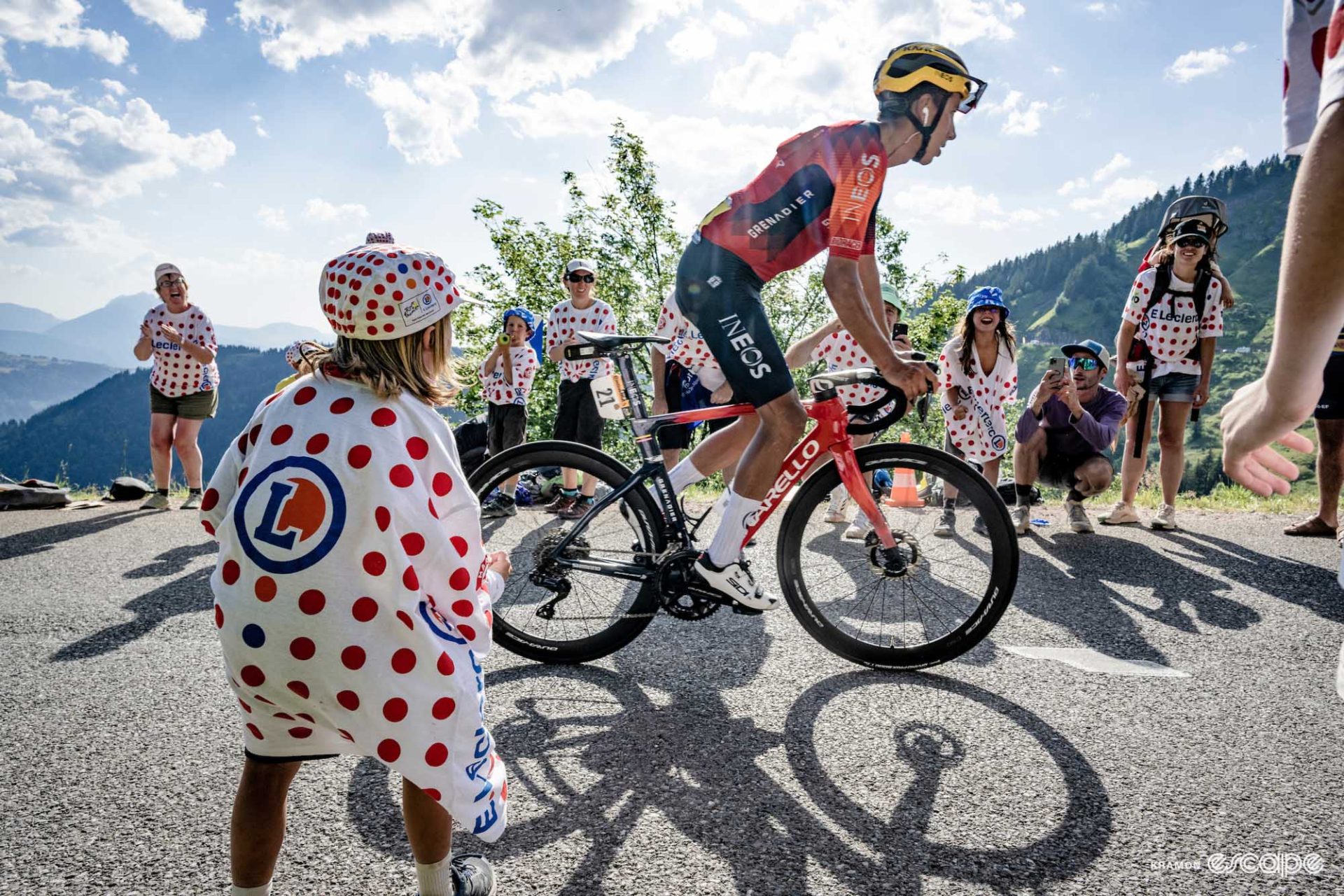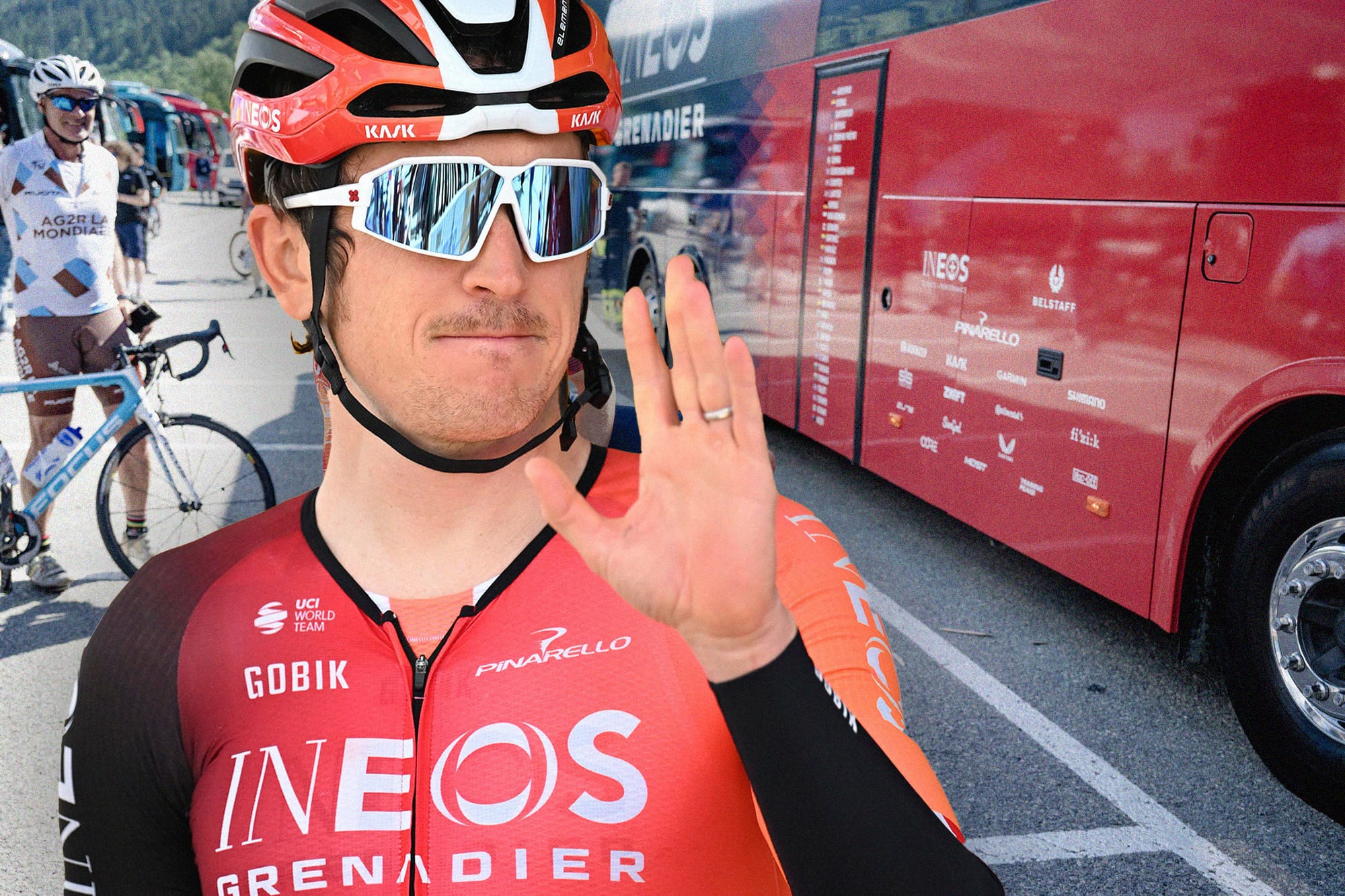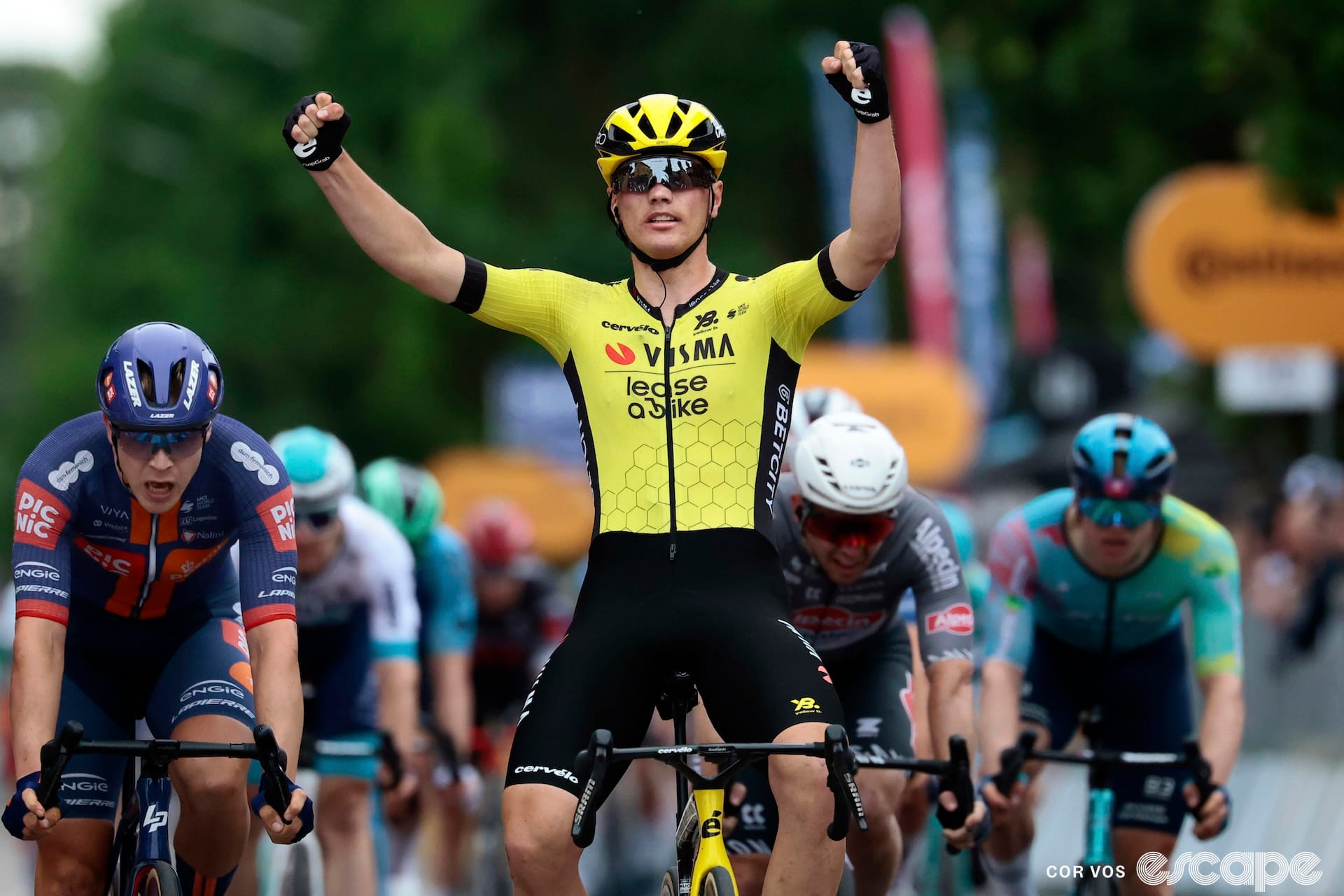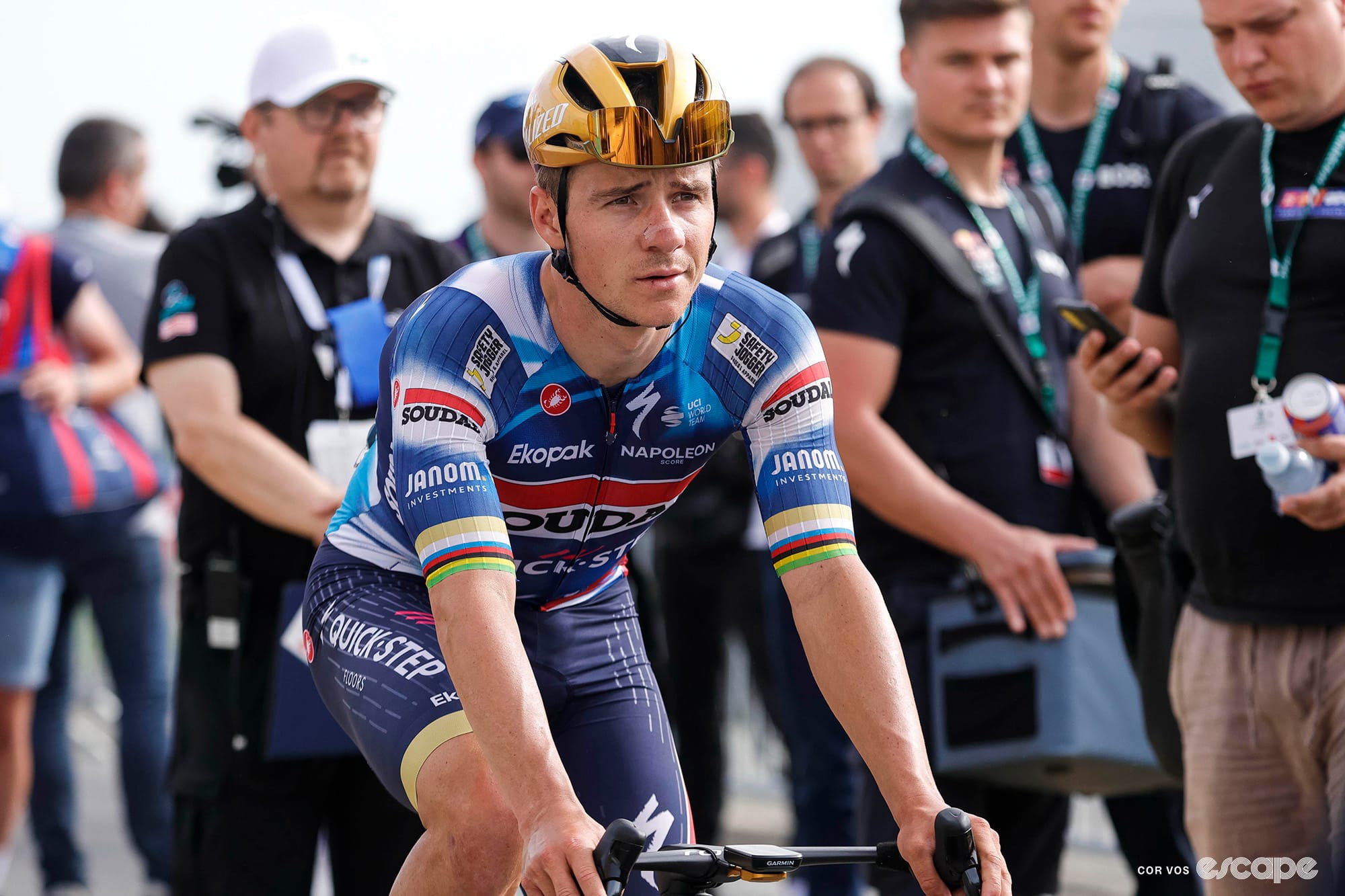In July 2019, in the treeless basin of the Alpine resort of Val Thorens, the reality of winning the Tour de France began to sink in for a young Egan Bernal. On the hill around the podium, a sea of Colombian flags waved as a chant went up: “Campeón, campeón, Bernal es campeón.” He became, overnight, a national talisman.
With humble beginnings in life, a gentle demeanour and quiet self-confidence, Egan Bernal seemed in that moment like the future of the sport, in that way that newly anointed Tour de France champions often seem. A stunning win at the 2021 Giro d’Italia confirmed his talent, seemingly setting the Colombian on a trajectory for years of matchups against the ascendant likes of Tadej Pogačar and Jonas Vingegaard. All was well, until it wasn't.
You probably know the next part. In January 2022, Bernal was training on his time trial bike, head down and at high speed, when he slammed into the back of a stopped bus. His injury list was extensive: 20 fractures in total, including a vertebra, his right femur and patella, 11 ribs and a punctured lung. On the roadside, his life hovered in the balance and his career seemed over; in the aftermath, a neurosurgeon told Bernal that he’d given him a 95% chance of dying or ending up a paraplegic.
For Bernal to even ride a bike again was a triumph, but elite sportspeople are driven in ways that mere mortals are not. Less than two weeks later, he was walking. By March, he was riding on an indoor trainer. By August, he’d started racing again. Driving the recovery were two symbiotic motivating factors: one intrinsic (Egan Bernal to return to his best, whatever that might now be), and one extrinsic (his Ineos Grenadiers team to nurture their investment, contracted until the end of 2026).
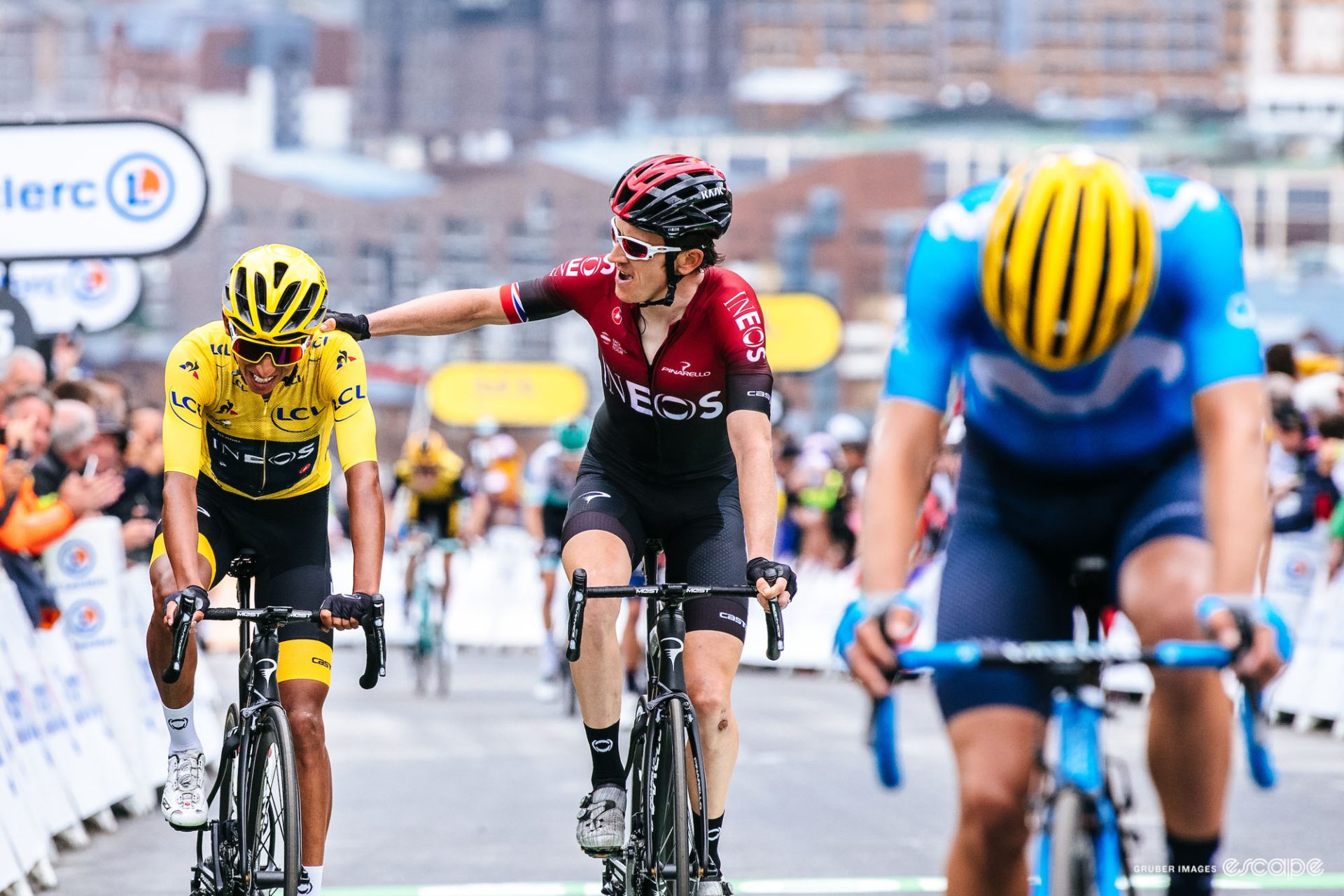
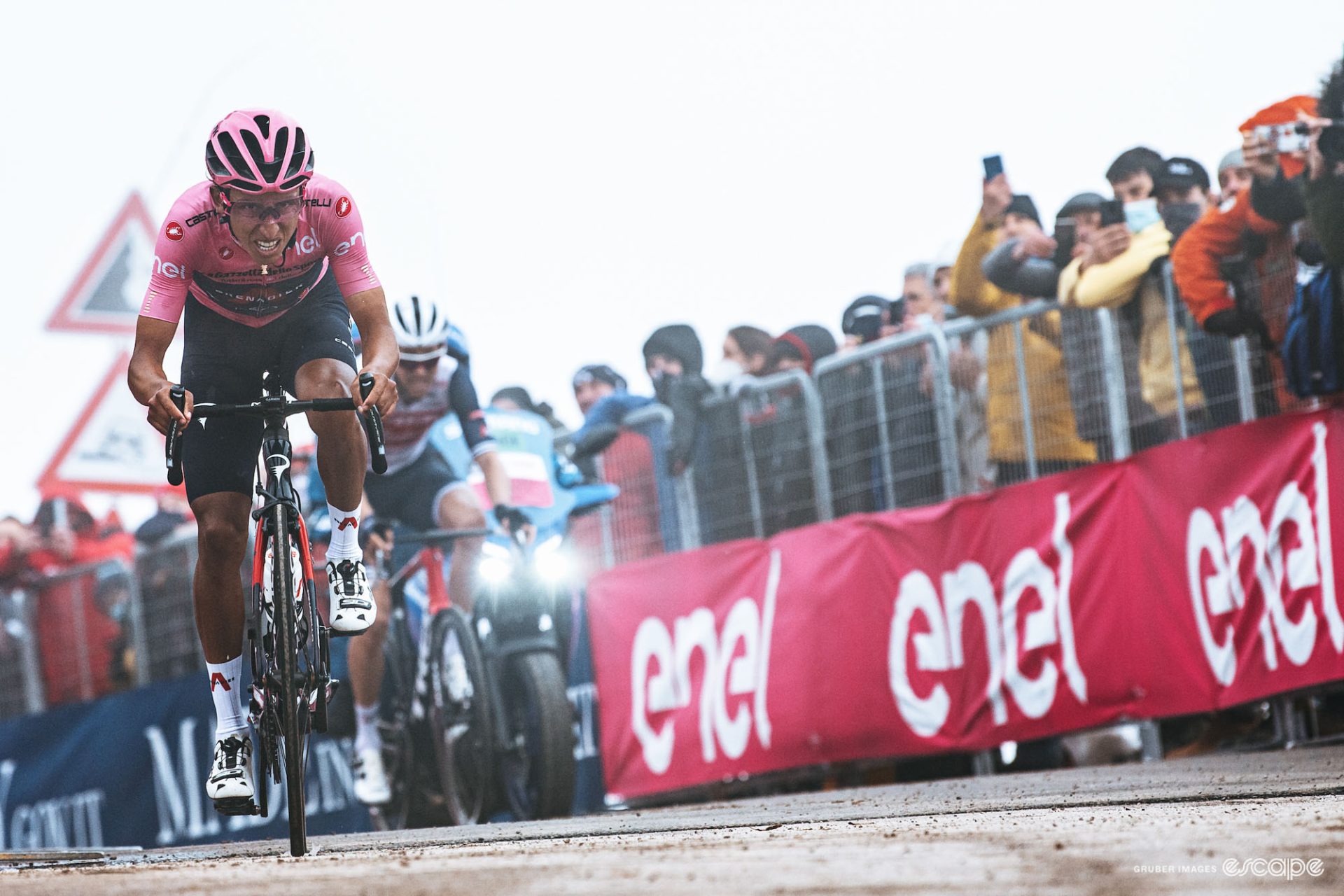
In the wake of such physical trauma, however, the question of what version of Egan Bernal might be possible has long hovered in the balance – still does, really. He’d returned to racing against all odds, but the gap to the pinnacle of the sport has increased with the latest crop of GC superstars. His first Grand Tours since the accident were simultaneously miracles of perseverance, and minor disappointments – 36th at the 2023 Tour, 55th at the Vuelta – rebuilding muscle and condition that was lost in his lengthy rehabilitation.
Now 27, Bernal is both older and more battle-scarred than the GC stars of today, with a philosophical head on his shoulders. His team has changed, too – former boss Dave Brailsford is out, as is deputy director Rod Ellingsworth, while new Ineos GC talents have emerged in Carlos Rodriguez and Tom Pidcock, alongside the evergreen Geraint Thomas. Bernal remains a leading star of the team but with an indeterminate place in the team hierarchy – as he told Thomas on the Geraint Thomas Cycling Club podcast, "I don't know if my best is winning the Tour, being a mountain support or just bringing the bottles. I have a second chance and I need to use it." This weekend’s efforts in his homeland are the most promising omens since January 2022.
At the Colombian National Championships, falling almost exactly two years on from his crash, Bernal finished in the top 10 in the time trial – impressive enough – before going on to contest the win in the men’s road race. In the end, it was a case of close but not quite close enough: Alejandro Osorio (briefly of Bahrain Victorious but now a domestic rider) was the sole survivor of a breakaway, finishing four seconds ahead of the aggressively chasing duo of Sergio Higuita (Bora-Hansgrohe) and Bernal. For Bernal, that was far from a disappointment: as he wrote on Instagram afterwards, “A Podium at the National Championship that after more than 70kms chasing and 2 years of hard work for me means another small victory.” His rival and compatriot Higuita, one step above him on the podium, commented simply "my admiration and respect always for you, Mr Bernal ❤️".
That ‘small victory’ on Sunday was close to a real one, but the triumph for Bernal was not the placing on the results sheet but how he'd gotten there. “To a certain extent I even felt nostalgic in the race,” Bernal told Deportes RCN at the finish. “I felt like the Egan of old.” Fear had been banished, replaced by the joy and drive of pure athletic performance: “I said I'd give it everything. I didn’t care if I got dropped on a climb, each turn was going flat out and that’s how I used to race – without fear. I felt that again.”
What next? Like everything in Bernal's lengthy recovery there are more questions than answers. His schedule for 2024 is a work in progress, shifting from set-in-stone (next week’s Tour Colombia) into the hazier realm of selection shortlists (the Tour de France, maybe, and possible team leadership at the Vuelta a España). That brings with it reason for sorrow-tinged nostalgia and for celebration: with each day’s racing, Egan Bernal the Tour de France champion gets more distant, but so too does the day he almost lost everything. With those in the rear view mirror, he knows where he's been: at the very best and the very worst. With the 'Egan of old' back in the mix, perhaps he can finally see more clearly where he's going.
Did we do a good job with this story?

